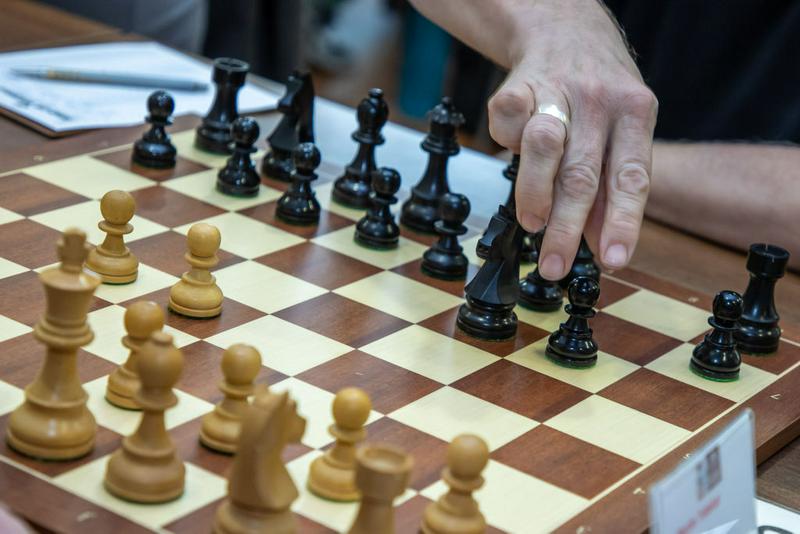The History of Chess: The Original Game of Thrones
By Karen Harris | January 9, 2023

Chess, with its complex rules, strategy, and royal game pieces, is a cerebral board game that requires patience, planning, and foresight to gain the upper hand over one’s opponent. It is a thinking game which is one of the key reasons why it has remained popular for centuries. Yes, centuries. The present-day chess game can trace its roots back to 6th century India where the game was a two-player simulated war battle game called ‘chaturanga’. Let’s look at how this game spread across the Islamic world and into the West and how it morphed into the game we play today.
Chaturanga
In India in the 500s, the game of chaturanga was played on an 8-by-8 board with carved game pieces representing elephants, chariots, infantry, and cavalry. Traders and merchants helped to spread the game into other areas, including Persia. The Muslim world adopted the game following the Arab invasion of Persia. European traders, particularly the Spanish, interacted with the Moors and learned about chaturanga from them. Variations of chaturanga, in fact, are found in various places across Europe, Africa, and Asia, thanks to the spice trade, the silk trade, and the salt trade. To this day, there are versions of chaturanga played in Japan, Ethiopia, Russia, Mongolia, Egypt, China, Turkey, Thailand, Morocco, Siberia, and all parts of Europe. It is played by practitioners of the world’s biggest religions.

Changing Chaturanga into Chess
There are two theories to explain how the game of chaturanga became known as chess. The first theory explains that, when chaturanga was adopted by the Persians, they renamed the king piece “shah”, the Persian name for "king". When victory was in sight, a player would say “shah mat”, meaning “the king is finished”. British merchants, it is thought, misunderstood and mispronounced this, which resulted in the name “chess” and the term “checkmate.” The other theory explains that the name of the game is an acronym of the major game pieces – the Chariot (or rook), the Horse (or knight), the Elephant (or bishop), and the Soldiers (or pawns) – or CHES.
Chess in Europe
According to textual evidence, the game of chaturanga was firmly established in the Iberian Peninsula by the 10th century. The game of chaturanga underwent many changes over the next few centuries. Game pieces were added, removed, or changed, but the arrangement of the game board – eight squares across and eight squares deep for a total of 64 squares – remained consistent.
The Influence of Medieval Europe
Chess was a popular game in Medieval Europe. There is written evidence to tell us that chess rulers and reference books existed, competitive tournaments were held, and debates took place to hash out new rules. More significant changes occurred as well. To appease the Christian Church, which had its hands in nearly every facet of life in the Middle Ages, the game pieces were changed from the types of pieces representational of Islamic countries to ones more fitting to the Christian culture. The game pieces became a king, a queen, knights, and bishops. The pawn was now associated with the “pedes” or footman, a term for a common infantry soldier. The rook represents a castle or fortress. Around the 1500s, chess evolved into the present version of the game.
In the early part of the medieval era, chess was played as a slow, methodical game. It was not uncommon for games to last for days. By the 1300s, however, changes to the rules and the movement of the game pieces helped to speed up gameplay. By the 1800s, a version of the game called “Romantic Chess” was most commonly played. In this style, chess was played with a series of quick maneuvers in place of the drawn-out strategic play.

Getting Flirty Over Chess
Because chess was so popular in Medieval Europe, everyone was encouraged to play, including women. Chess, believe it or not, became a tool of courtship. Under the strict rules of society at the time, a young man could not spend one-on-one time with a young woman without her parents being included in their conversations. Young lovers discovered that chess offered them a loophole. If a young couple played a game of chess, they could spend time together, enjoy a conversation, and gaze longingly into each other’s eyes. It was bad manners for spectators to hover over a chess game and converse with the players. A young lady’s parents or chaperone could watch her from a distance, but chess gave her a chance to get to know her suitor better.
All Hail the Queen
When chess originated as chaturanga in the 600s, the queen was the weakest game piece on the board. The bishop was also rather weak as it could only move short distances. That was one of the reasons why the game moved so slowly. After the rules were revamped in the Middle Ages, the queen became the strongest game piece. The entire dynamics of the game of chess shifted. Not only that but the new rules made chess more conducive to organized play.
A Thinking Person’s Game
The rules and strategy of chess haven’t changed much in the last hundred years, but it is now possible to play the thinking person’s game against a computer, pitting human intelligence against artificial intelligence. Chess requires forethought, patience, strategy, and critical thinking which are all skills we want to develop in young people. Chess is played in schools and on playgrounds and in clubs. It is truly a game for the ages.